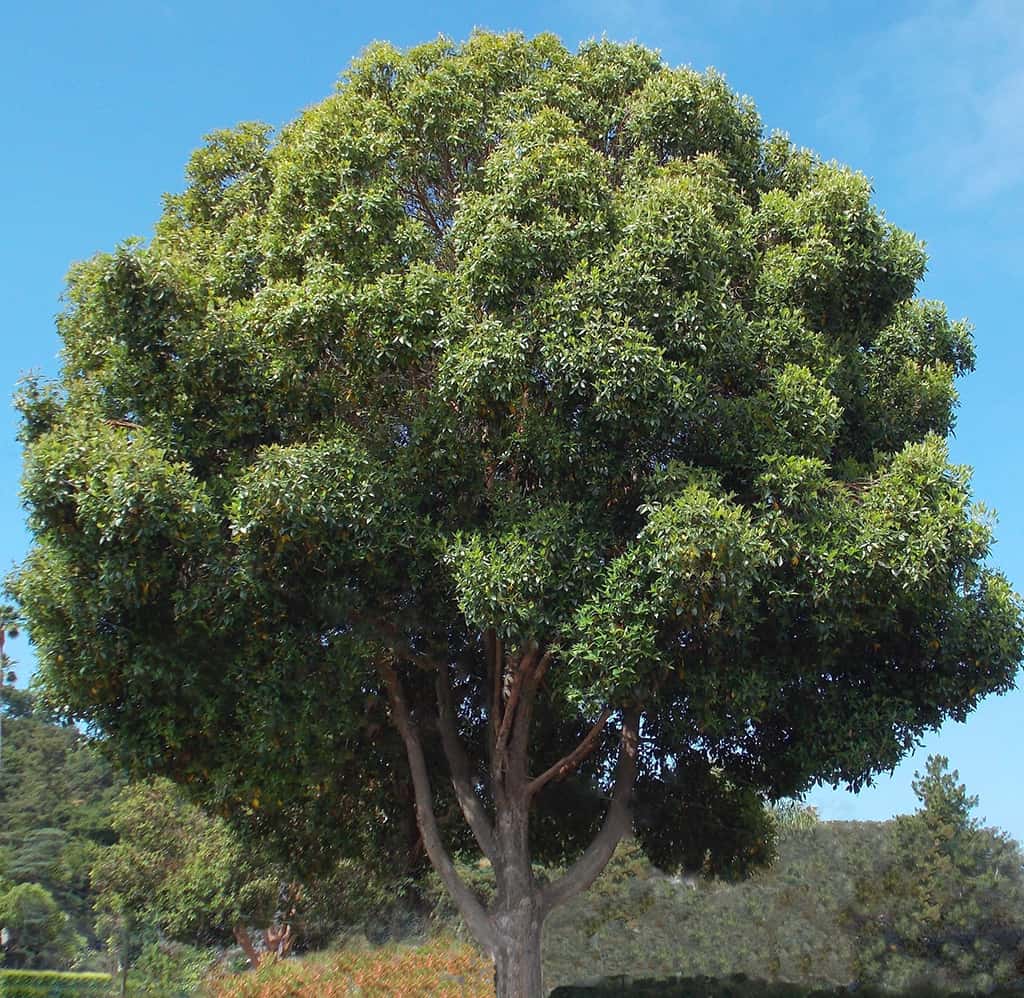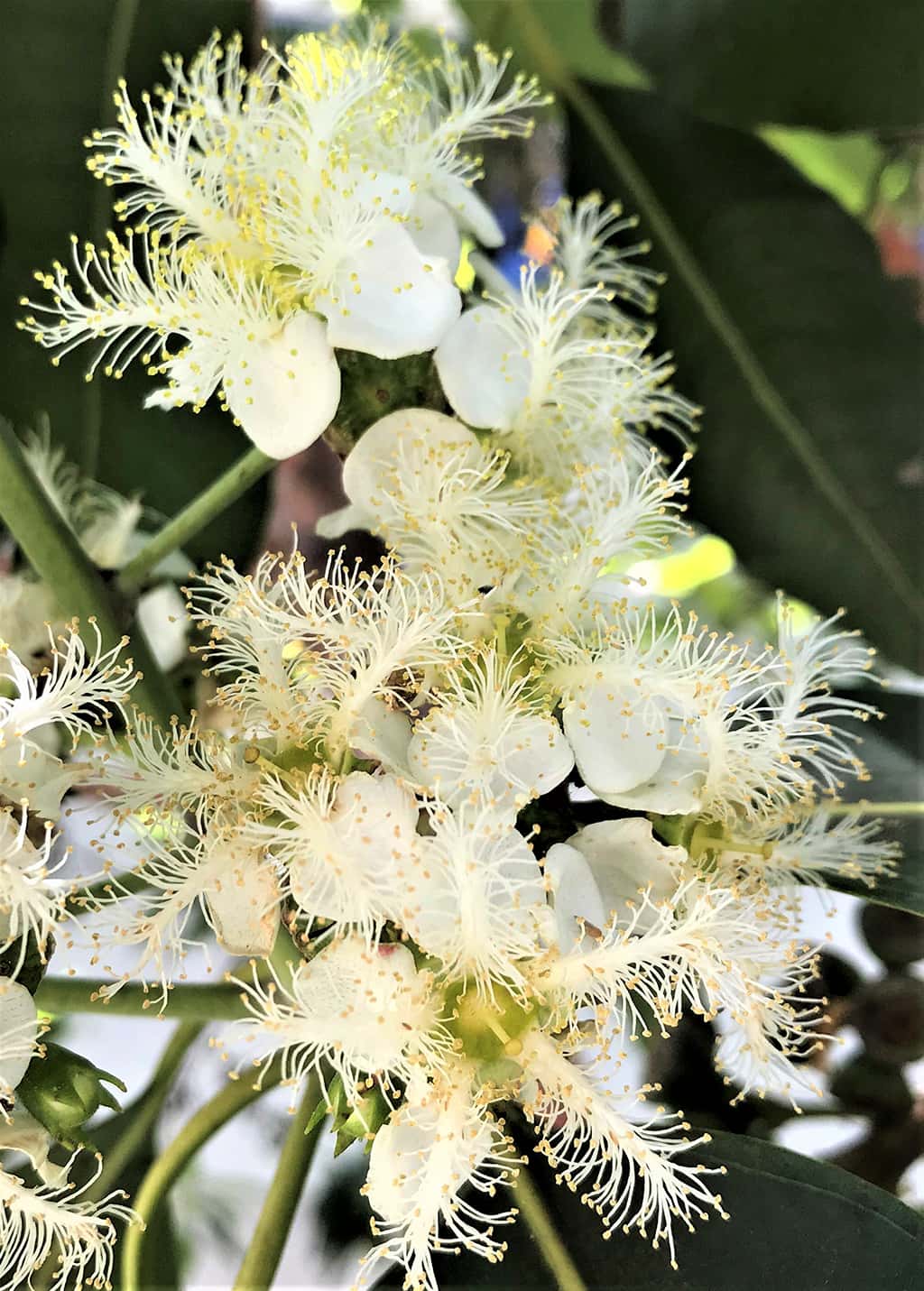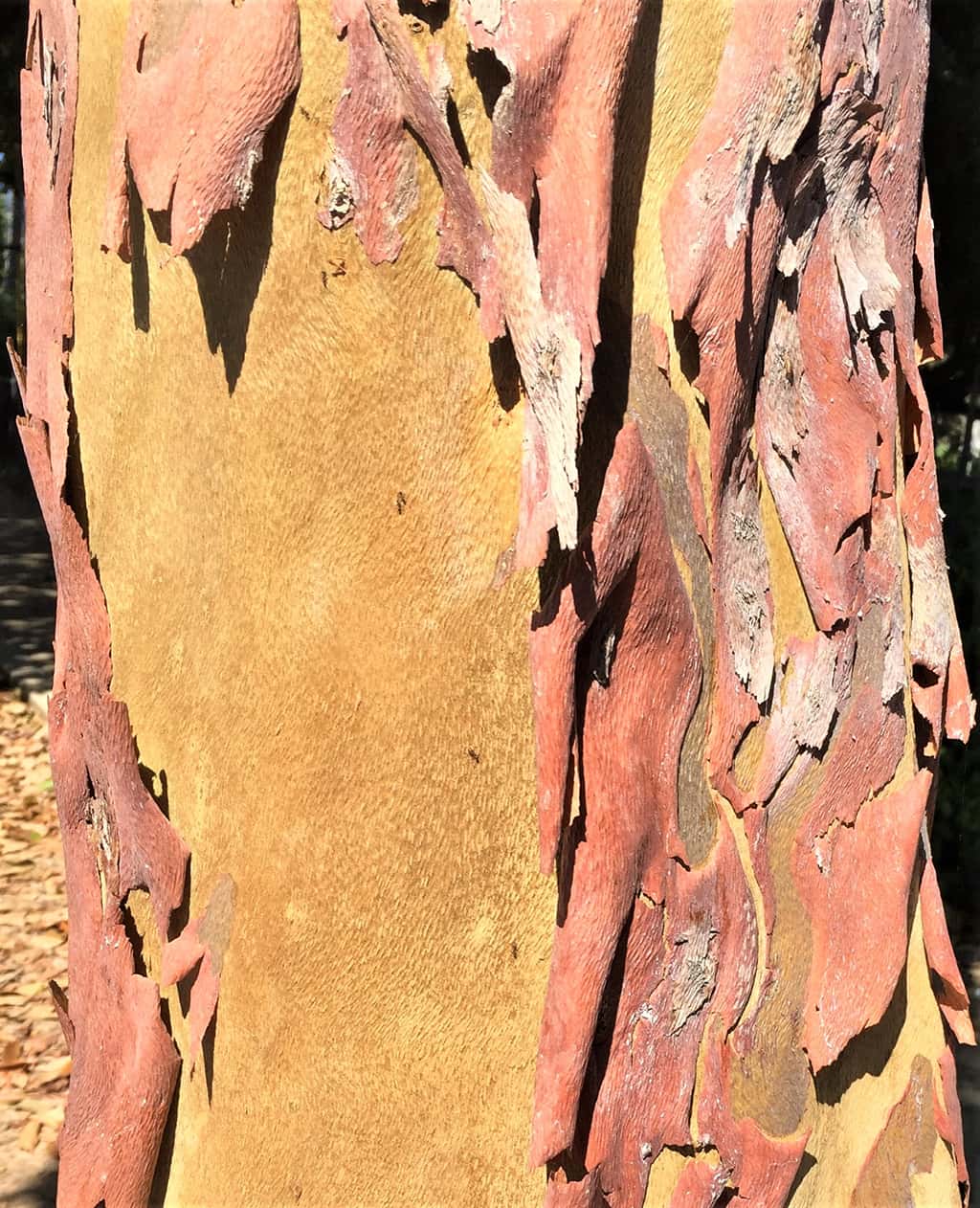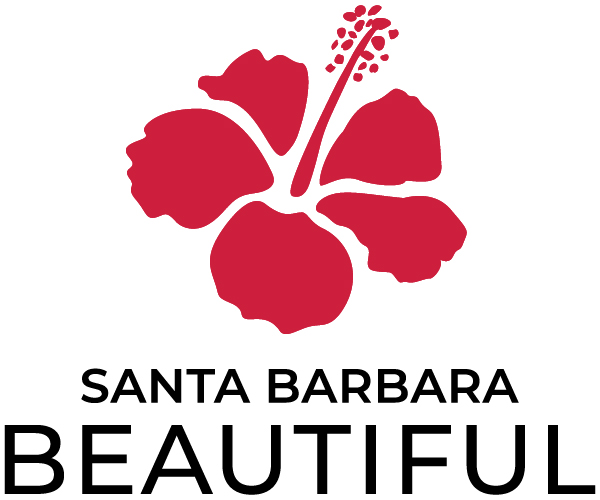Santa Barbara Beautiful Tree of the Month – July 2019

The Brisbane box tree can best be described as a beautiful, refined, and well-behaved Eucalyptus tree. In fact, someone seeing it for the first time might easily mistake it for a Eucalyptus; this is understandable, since both are in the Myrtle family. However, the Brisbane Box is much more highly recommended (and appreciated) than its messy and problematic relative, because it truly is an ideal broad-leafed evergreen tree for the Santa Barbara area.
It begins as a moderate- to fast-growing tree; but, after reaching a height of 30 to 40 feet, its rate of growth slows considerably. Under ideal conditions here, it can be as tall as 60 to 70 feet with a width of 25 feet. As it matures, it will develop a stately, dense, round- to pyramidal-shaped crown – providing much more cooling shade and cover for birds than most Eucalyptus could ever do.
In June and July, its multitudinous flowers bloom. Being relatively inconspicuous, they are frequently ignored by the casual observer. However, these lovely flowers are worth a closer look, because they really are quite extraordinary – they are “feathery”!
White flowers (1-inch across) occur in clusters (called “cymes”), each cluster bearing 3 to 7 flowers. Each flower has five petals with wavy margins. The stamens (pollen-bearing structures that spike up from the center of the petals) are fused into five bundles (up to ¾ inch long) which are covered with a “fluff” of stamens and anthers extending outward ¼-inch – these form the delicate “feathers”. Generous amounts of pollen and nectar are produced to attract bees. After pollination and by late summer, the flowers develop into bell-shaped seed capsules (¼- to ½-inch diameter).
At the tip of each new twig, glossy dark-green lance-shaped leaves (4 to 6 inches long and 1 to 2 inches wide) sprout out, appearing in whorls of 4 to 5 leaves. A variegated variety, displaying attractive white-edged leaves, is also available.
Yet another distinctive characteristic of this wonderful tree is its reddish-brown bark, furrowed on the lower trunk, which peels off to reveal a beige to pinkish-brown smooth surface – somewhat similar in appearance to our native madrone.
Brisbane box is native to northern and eastern Australia – Brisbane is the capital of Queensland. In its homeland, it can grow to 150 feet tall and makes excellent lumber, the wood being strong and durable.
Its botanical name is Lophostemon confertus. The genus name, Lophostemon, comes from the Greek words lophos (meaning “crest”) and stemon (meaning “stamen”) and refers to the crested stamens of the flowers. The specific epithet, confertus (meaning “dense”), refers to the dense foliage.
Brisbane box does best in good soils – without good nutrition, it will develop chlorotic (yellow) leaves. It takes full sun. It is deep-rooted and, therefore, quite drought-tolerant when established; of course, it will look better with monthly deep watering during the dry season. When young, it will be damaged by frost; when mature, it can tolerate cold to 25 degrees. An extra bonus – it does not seem to have any insect or disease problems.
As a lovely, low-maintenance, evergreen tree which enjoys our Mediterranean climate, the Brisbane box is perfect to plant here as a street tree, a lawn specimen, a park tree, or a screen.
Planted extensively in Santa Barbara over the years, the Brisbane box can be seen as a street tree on upper State Street (between Ontare Road and La Cumbre Road), in the 1300-1600 Blocks of Anacapa Street, in the 200-400 and 3000 blocks of Samarkand Drive, in the 200 block of East Arrellaga Street, in the 800 Block of West Figueroa Street, and in the 800 Block of Vine Avenue.
Tree-of-the-Month articles are sponsored by Santa Barbara Beautiful, whose many missions include the increase of public awareness and appreciation of Santa Barbara’s many outstanding trees and, in a long-time partnership with the City Parks & Recreation Department, the funding and planting of trees along the City’s streets – a project which has resulted in the planting, to date, of more than 13,000 street trees.
Article and photos by David Gress


